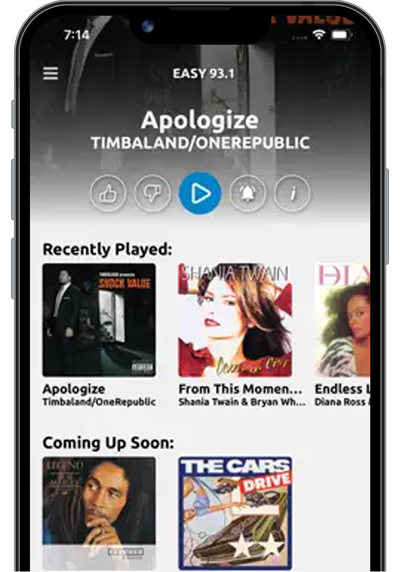Outlets may not be safe if they get wet
Outlets must be properly grounded. Professionally installed outlets are grounded, but install-yourself units might not be.
But if outlets get wet, they might be unsafe, regardless of grounding.
You need a surge protector, not just a power strip, to protect your electronic equipment. Check the label to see if it is UL (Underwriters Laboratory) listed and complies with 1449 TVSS (Transient Voltage Surge Suppressor) standard.
Battery backup: Use an Uninterruptible Power Supply (UPS) with a built-in battery to power your computer in case of a short power outage. Never plug laser printers into a UPS.
Do not rely on general purpose battery back-ups (UPS) to power critical medical devices during an electrical storm. Check with your doctor or pharmacy to obtain approved systems for that purpose.
If you evacuate: Computers and other electronics equipment should be unplugged and stored in high cabinets or interior closets away from windows. Cover the equipment with strong trash bags. Copy important computer files onto two sets of CDs. Keep one with you and have another in a separate location. Take the CDs if you have to evacuate.
Getting reconnected: If outlets or electrical equipment have been exposed to water or moisture, replace items or have a professional inspect and give the OK before you use them. Don’t just wait until the equipment has dried; it might be damaged and unsafe. Some appliances’ motors or circuits boards are near the bottom and can get wet in even minimal flooding. If in doubt, throw it out!
More safety tips: www.UL.com/consumers
CELLPHONES
Plan for trouble with your cellular service for at least a day or two after the hurricane. Before the storm, charge phones and cellphone batteries. Get a charger that can be plugged into a car’s utility outlet.
If you find regular phone service is unsatisfactory, try your cellphone’s text messaging or walkie-talkie features.
HOME PHONES
Invest in an inexpensive phone that connects right to the wall jack, since you’ll be out of luck if you just have cordless phones, which need electricity.
DIGITAL CAMERAS
Make sure the camera is charged and has fresh batteries and the media card has enough room to store your post-storm images. You might not be able to download photos to your computer, to clear space on the card, if the electricity is out.
Consumer tips from AT&T
Here are AT&T’s recommendations for consumers in preparation for hurricane season:
Have a family communications plan in place. Designate someone out of the area as a central contact, and make certain that all family members know whom to contact if they become separated. Most importantly, practice your emergency plan in advance.
Be sure you have a “hurricane phone.” It’s a good idea to have a wireless phone on hand and at least one corded (landline) telephone that is not dependent on electricity in case of a power outage. Cordless telephones usually have receivers that are electrically charged, so they won’t work if you lose your power.
Program all of your emergency contact numbers and e-mail addresses into your mobile phone. Numbers should include the police department, fire station and hospital, as well as your family members.
Keep your wireless phone batteries charged at all times. Have an alternative plan to recharge your battery in case of a power outage, such as charging your wireless device by using your car charger or having extra mobile phone batteries or disposable mobile phone batteries on hand.
Keep your wireless phone dry. The biggest threat to your device during a hurricane is water, so keep your equipment safe from the elements by storing it in a baggie or some other type of protective covering.
Forward your home number to your wireless number in the event of an evacuation. Because call forwarding is based out of the telephone central office, you will get incoming calls from your landline phone even if your local telephone service is disrupted at your home. In the unlikely event that the central office is not operational, services such as voice mail, call forwarding, remote access call forwarding and call forwarding busy line/don’t answer may be useful.
You can track the storm and access weather information on your wireless device. Many homes lose power during severe weather. Services are available that allow you to watch weather reports, if you have a wireless device that provides access to the Internet.
If you have a camera phone, take, store and send photos — even video clips — of damaged property to your insurance company from your device.
Take advantage of location-based mapping technology. Services help you seek evacuation routes, avoid traffic congestion from downed trees or power lines and track a family member’s wireless device in case you get separated.
© 2020 Cox Media Group

:quality(70)/cloudfront-us-east-1.images.arcpublishing.com/cmg/PG65BQSQGZA75AWWTVLBFM7ZSI.jpg)



:quality(70)/cloudfront-us-east-1.images.arcpublishing.com/cmg/73XQ4X7EARCVBNQML3UPJ2TRSA.jpg)
:quality(70)/cloudfront-us-east-1.images.arcpublishing.com/cmg/LFLXDRAY7BAK7BPFRGFNZTJU4Q.png)
:quality(70)/cloudfront-us-east-1.images.arcpublishing.com/cmg/JO5M5R3ZBBFCPOWMGQX7BHP3GI.png)
:quality(70)/cloudfront-us-east-1.images.arcpublishing.com/cmg/RGM2R4ZRPJC7RJUC5HXCLVYINE.jpg)
:quality(70)/cloudfront-us-east-1.images.arcpublishing.com/cmg/BGG6FVMQDNEARLVVK7SG7YB6QA.png)
:quality(70)/cloudfront-us-east-1.images.arcpublishing.com/cmg/576KYBCOBNHVZMGNPY2EIHBBBE.png)
